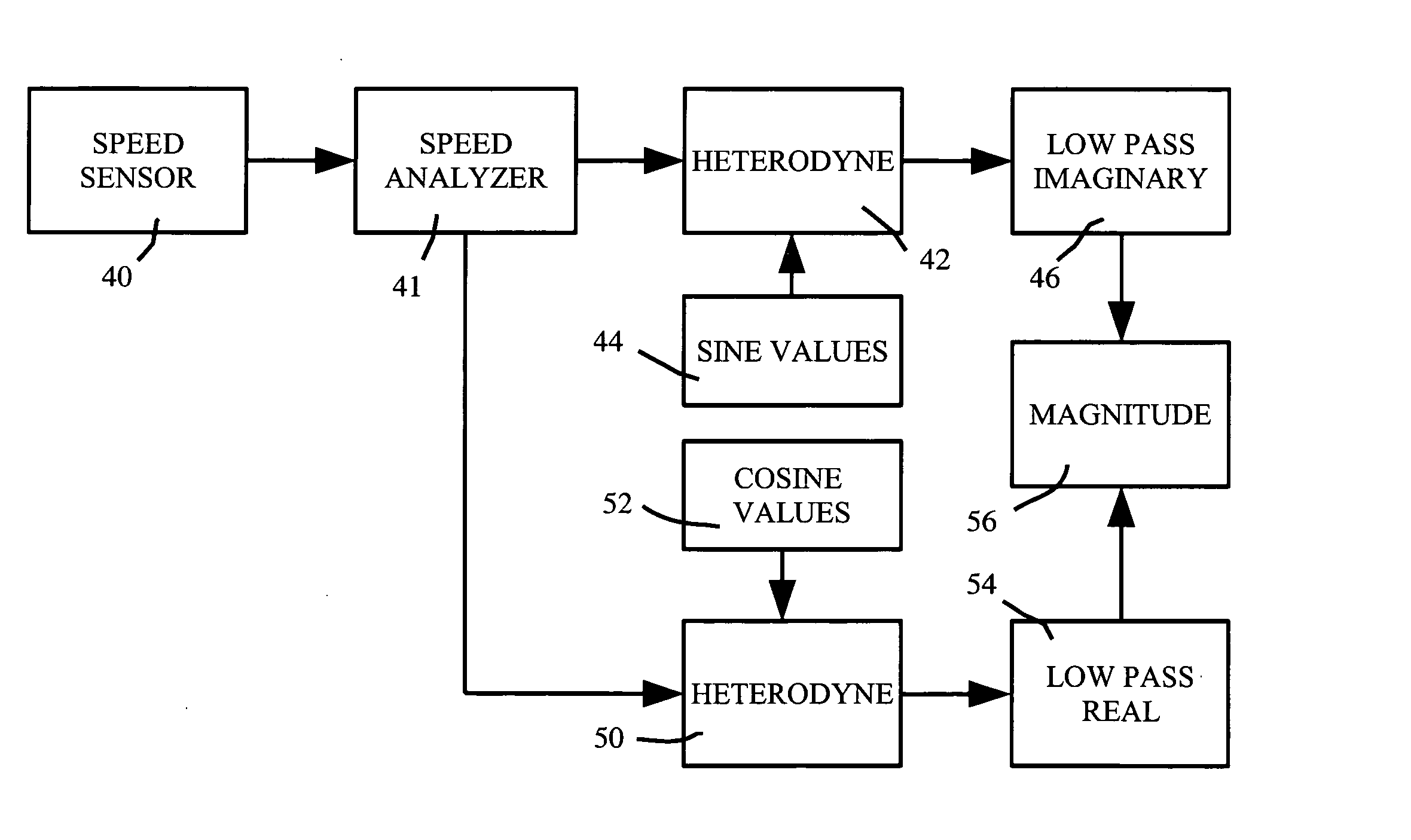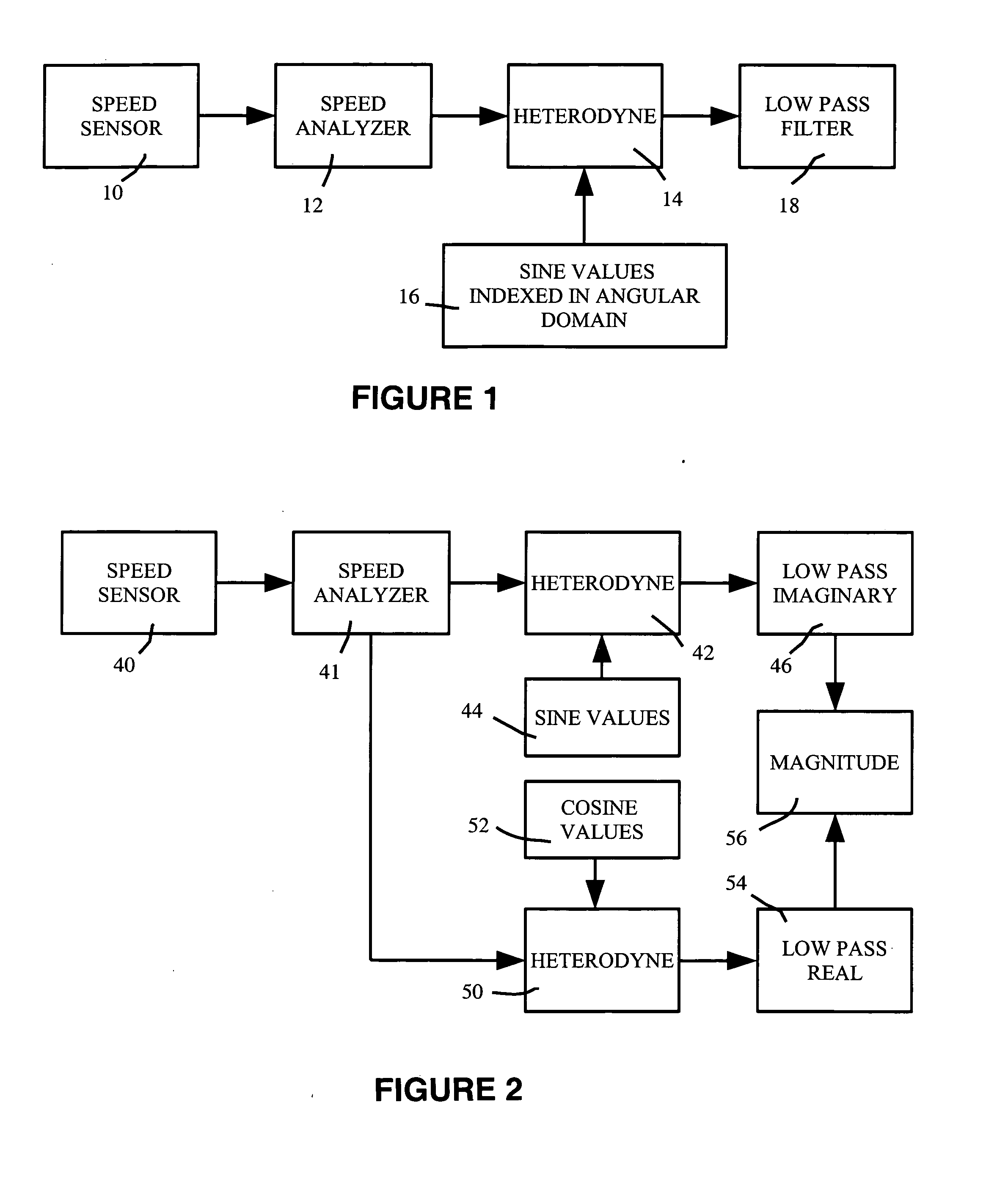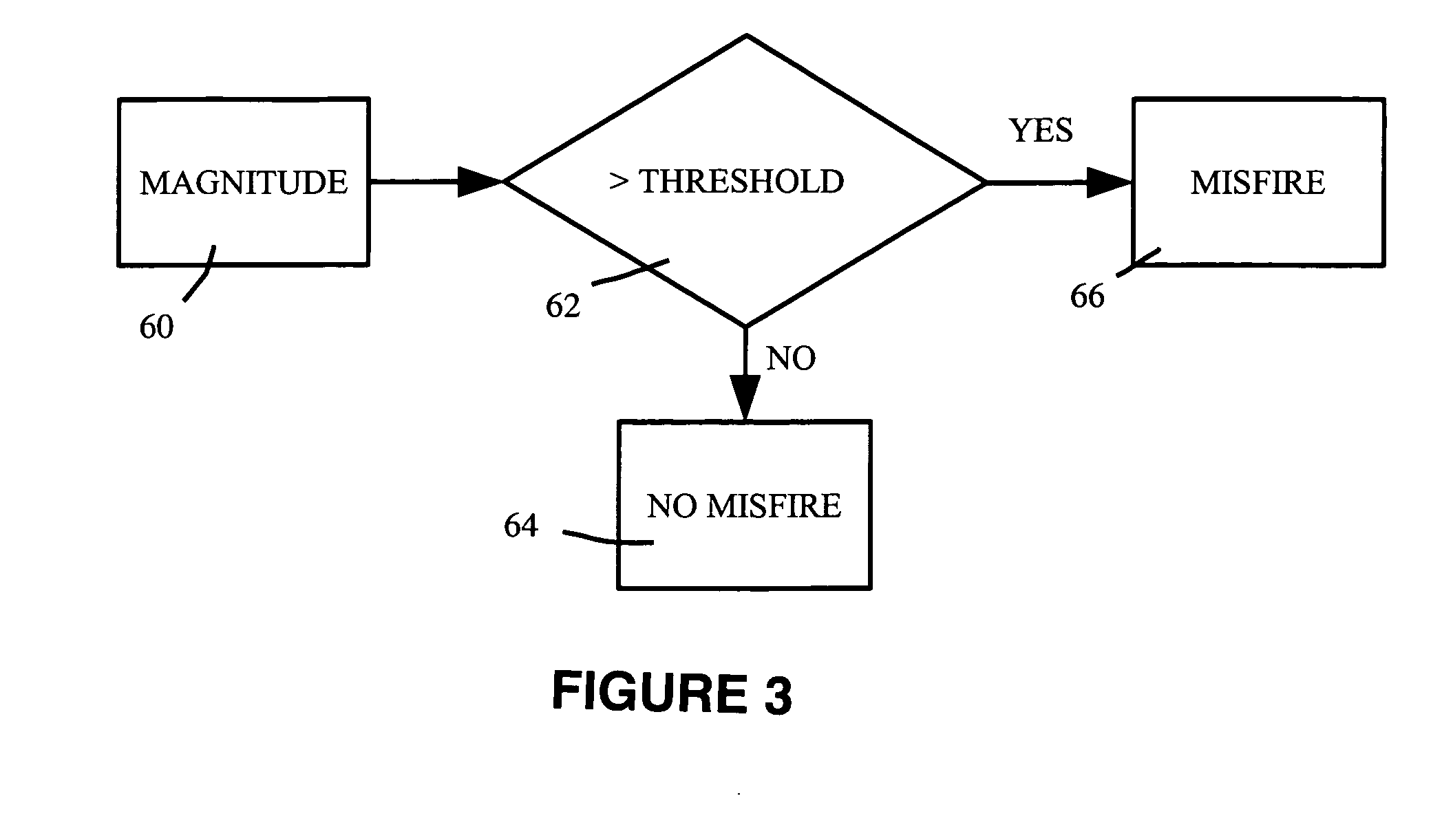Engine misfire detection
- Summary
- Abstract
- Description
- Claims
- Application Information
AI Technical Summary
Benefits of technology
Problems solved by technology
Method used
Image
Examples
Embodiment Construction
[0014] In a conventional four-stroke multi-cylinder engine, any given cylinder fires once every two revolutions of the engine. A single cylinder misfire in any multi-cylinder engine causes a strong half-order engine speed variation (also called a torsional velocity signature), which can be detected as part of an improved engine management system. Hence, the half order (and sometimes the first order) torsional vibration magnitude is a strong indicator of engine misfire.
[0015] First order analysis can be useful for engines with certain type of ignition systems where cylinders are paired on a common ignition coil, as a pair of cylinders misfiring 360 degrees apart generates a strong first order signature.
[0016] In this application, terms such as “first-order,”“half-order,” etc. relate to torsional vibrations at multiples of engine speed. A first-order signal repeats once per engine revolution, and a half-order signal repeats once per two engine revolutions. The term “engine speed” re...
PUM
 Login to View More
Login to View More Abstract
Description
Claims
Application Information
 Login to View More
Login to View More - R&D
- Intellectual Property
- Life Sciences
- Materials
- Tech Scout
- Unparalleled Data Quality
- Higher Quality Content
- 60% Fewer Hallucinations
Browse by: Latest US Patents, China's latest patents, Technical Efficacy Thesaurus, Application Domain, Technology Topic, Popular Technical Reports.
© 2025 PatSnap. All rights reserved.Legal|Privacy policy|Modern Slavery Act Transparency Statement|Sitemap|About US| Contact US: help@patsnap.com



